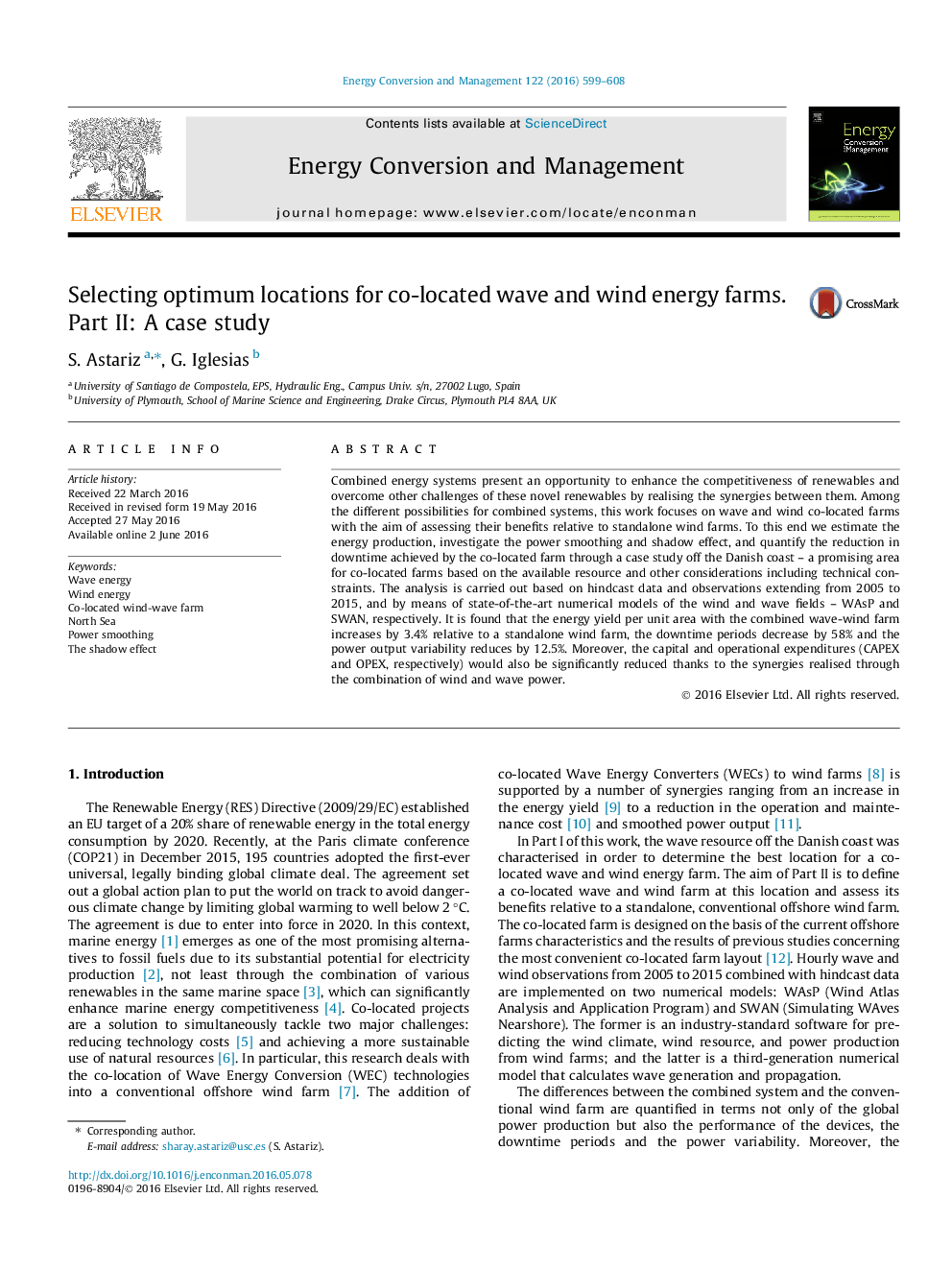| Article ID | Journal | Published Year | Pages | File Type |
|---|---|---|---|---|
| 7160324 | Energy Conversion and Management | 2016 | 10 Pages |
Abstract
Combined energy systems present an opportunity to enhance the competitiveness of renewables and overcome other challenges of these novel renewables by realising the synergies between them. Among the different possibilities for combined systems, this work focuses on wave and wind co-located farms with the aim of assessing their benefits relative to standalone wind farms. To this end we estimate the energy production, investigate the power smoothing and shadow effect, and quantify the reduction in downtime achieved by the co-located farm through a case study off the Danish coast - a promising area for co-located farms based on the available resource and other considerations including technical constraints. The analysis is carried out based on hindcast data and observations extending from 2005 to 2015, and by means of state-of-the-art numerical models of the wind and wave fields - WAsP and SWAN, respectively. It is found that the energy yield per unit area with the combined wave-wind farm increases by 3.4% relative to a standalone wind farm, the downtime periods decrease by 58% and the power output variability reduces by 12.5%. Moreover, the capital and operational expenditures (CAPEX and OPEX, respectively) would also be significantly reduced thanks to the synergies realised through the combination of wind and wave power.
Related Topics
Physical Sciences and Engineering
Energy
Energy (General)
Authors
S. Astariz, G. Iglesias,
